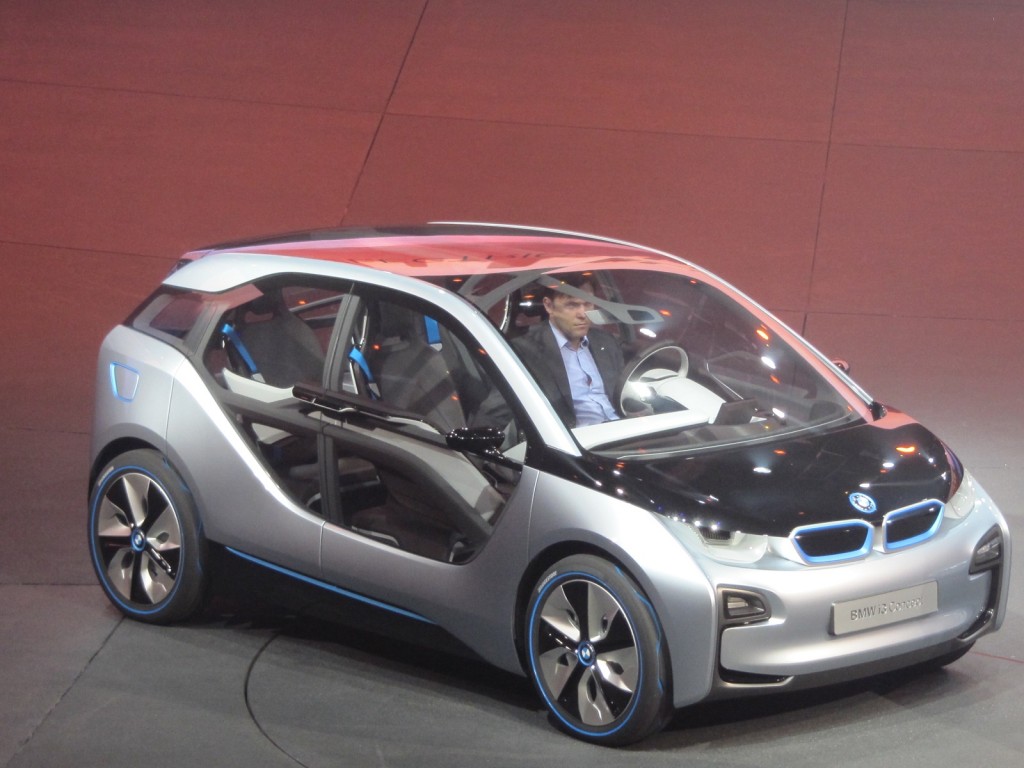Diversity among electric cars is rapidly expanding, from the all-electric Nissan Leaf and Mitsubishi 'i' to the upcoming Toyota Prius Plug-In Hybrid, which provides just 9 to 13 miles of electric range.
Now, it turns out, the 2014 BMW i3--the all-electric urban four-door subcompact that BMW showed last week in concept form--will offer the option of a gasoline range extender.
The i3 will run entirely on electricity from a 21- to 22-kilowatt-hour lithium-ion battery pack in the floor. The battery pack powers a 125-kilowatt (170-horsepower) motor driving the rear wheels.
Photo Gallery: BMW i3 Electric Car And i8 Plug-In Hybrid Live Photos
Photo Gallery: BMW i3 Electric Car And i8 Plug-In, Under The Hood: Live Photos

BMW i Launch Event, Frankfurt, July 2011
REx is a "small, very smooth-running, and quiet" gasoline engine that powers an electric generator. The electricity it produces maintains the battery level once it's depleted, providing power to the traction motor that moves the car.
BMW explains why this is useful: "In a sense, therefore, the Range Extender is like having a reserve fuel can on board."
More details: BMW i3 Concept: Battery Electric Urban Minicar—Full Details

BMW i Launch Event, Frankfurt, July 2011
In multiple interviews at last week's i3 Concept launch event in Frankfurt, BMW executives revealed the following details about the REx engine:
- It's an inline two-cylinder of roughly 600 cc (0.6 liter) capacity
- It will be fitted with automatic start-stop to save fuel when the vehicle is at rest
- It will be rated as a Super-Ultra Low Emissions Vehicle (SULEV), the lowest-emission rating for any combustion engine
- It will be heavily optimized to minimize noise, vibration, and harshness in operation
Most intriguingly, BMW acknowledged that it's an engine that "you might find in another BMW Group product"--which is to say, most likely derived from a BMW motorcycle engine.
Summary: BMW i3 Electric Car And BMW i8 Plug-In Hybrid: Overview

BMW i Launch Event, Frankfurt, July 2011
Motorcycle engines must meet a wide range of power demands, from fast acceleration to high-speed cruising. Range extenders, on the other hand, can be optimized to run at a single speed or within a narrow rev band to operate most efficiently while running the attached generator.
BMW stressed that the REx "isn't for regular use, just to keep the electric system going," and that the i3 was clearly an electric car with a range extender, and not a plug-in hybrid like the i8 Concept mid-engine sports car it showed at the same time.
More details: BMW i8 Concept: Plug-In Hybrid Sports Coupe—Full Details
The BMW i3 (nee MegaCity Vehicle) was always intended to be a battery-electric car, said one i3 program manager. The concept of a range extender "was added a little bit later."

BMW i Launch Event, Frankfurt, July 2011
It's worth noting, by the way, that the i3 Concept isn't the only electric car fitted with a tiny range-extending engine-generator set under the rear deck. That's the same layout used by the Audi A1 e-tron concept shown at the 2010 Geneva Motor Show--except the A1 used a tiny Wankel rotary engine.
If once is innovation, perhaps twice is a trend?
BMW provided airfare, lodging, and meals to enable High Gear Media to bring you this first-person news report.
+++++++++++













